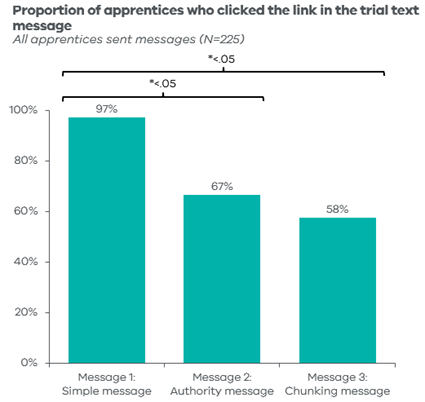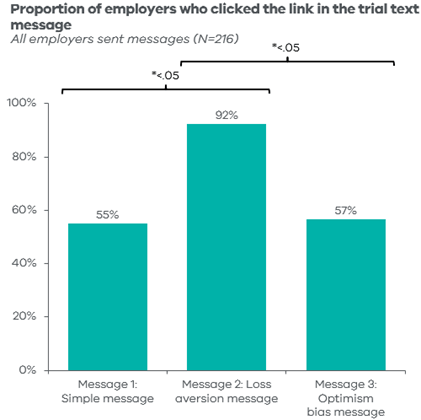The behavioural challenge
Energy Safe Victoria (ESV) is Victoria's safety regulator for electricity, gas, and pipelines. Among other responsibilities, they oversee the licensing of Victoria’s electrical workers, including electrical apprentices who need to become licensed as they finish their apprenticeship. ESV also works with TAFEs and employers to ensure all apprentices are safe and supervised during their apprenticeship.
ESV approached the Behavioural Insights Unit (BIU) to collaborate on a behavioural insights-based project. The aims of this project were:
- To make sure that apprentices get licensed at the end of their apprenticeship in a timely manner (if appropriate).
- To increase apprentice supervision rates during apprenticeships.
What we did
BIU ran a project with three parts:
- Part one: Understanding the context around apprentice licensing and developing solutions
- We ran behaviour mapping and barrier mapping workshops to understand the granular details of apprentice licensing
- We developed behaviourally informed solutions that included text messages, changes to the ESV website, and new ways of delivering information to apprentices, employers and registered training organisations
- Part two: Trialling messages to increase apprentice licensing rates
- We designed and assisted ESV to conduct a trial to compare three messages for apprentices and three messages for employers (see below for more detail)
- Part three: Deep dive into apprentice supervision to understand how it can be increased
- We ran behaviour and barrier mapping workshops to understand who is involved in apprentice supervision and why supervision might not happen
- We conducted qualitative fieldwork with employers, a group training organisation, and apprentices to understand more about what the barriers were for licensing and supervision
- We designed and administered a survey for employers and apprentices to understand behaviour on a larger scale
What we found
Trial messages
For apprentices, we trialled three messages:
- Simple message: A message with minimal words and a clear call to action
- Authority message: A message that leverages ESV’s role as the regulator
- Chunking message: A message that lays out the three things that the apprentice needs to do immediately
For employers, we trialled three messages:
- Simple message: A message with minimal words and a clear call to action
- Loss aversion message: A message that tells the employer that they could face a fine if their apprentice is not licensed
- Optimism bias message: A message that encourages the employer not to assume that an apprentice will know how to get licensed on their own
Trial results
We measured engagement with the messages by seeing how many new users visited the link in the text message in the two weeks after each message was sent out (messages were released every two weeks and nobody else was able to access the website as it was hidden from searches).
For apprentices, the simple message drove the highest amount of engagement and the difference between the simple message and the other two messages was statistically significant at the .05 level.
For employers, the loss aversion message led to the most website engagement. This difference was also statistically significant at the .05 level.
Thanks
We thank our partners at ESV for their enthusiastic participation and insights throughout this project.
Updated

